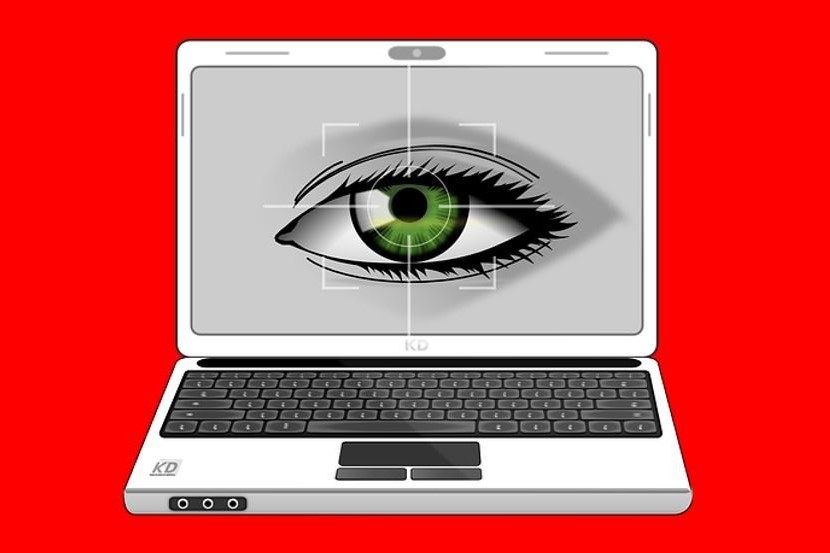
Dry eye syndrome: how to protect your eyes from PC exposure
PC exposure can cause dry eye syndrome due to blue light emission
Some disorders that affect us are in reality easily solved, even often without the need for medication.
One of these is certainly the phenomenon of dry eye, a condition that occurs very frequently and affects in particular those who spend many hours in front of a screen.
Here is how to protect your eyes at the PC.
What is dry eye syndrome
Dry eye syndrome is nothing more than an alteration in eye secretion, the balance of which is challenged by mainly external factors, including prolonged exposure to blue light from screens.
The eye normally emits secretions that make up the tear film, a kind of protective film that repairs the outer surface of the eye itself, i.e. the cornea: when this balance is disturbed, we are faced with dry eye syndrome.
Symptoms of dry eye syndrome
The symptoms of dry eye are varied and are generally found irrespective of the cause of the alteration, whether it is external (screens, pollution, etc.) or internal, i.e. linked to health problems that may or may not be related to vision.
Among the most common symptoms of dry eyes are:
- burning
- poor tearing
- red eyes
- photophobia (discomfort from light)
- foreign body sensation in the eye
- difficulty opening the eyes in the morning
- blurred vision
Causes of dry eye
As we were saying, the causes of dry eye can be numerous, but exposure to visual displays such as computers, tablets and mobile phones has exponentially increased cases of altered lachrymation, also due to smart working and distance learning.
Many of the activities that used to take place in person – such as meetings and coffee breaks – in recent months are experienced behind a screen, to which one often remains attached for several consecutive hours.
Among the causes of dry eye, however, there may be other triggers, such as air pollution and dry, air-conditioned air, or illnesses, hormones, medication and incorrect contact lens wear.
Dry eye and blue light
One of the main reasons why prolonged and continuous exposure to displays causes dry eye is obviously the blue light emitted by the devices themselves.
When this light is between 380 nm and 440 nm, it is even considered potentially harmful to both the cornea and retina.
Treatment and remedies for screen eye dryness
If you experience the symptoms of dry eye syndrome, you should contact a specialist, who will be able to confirm through an eye examination whether your hunch is right and, above all, whether it is in fact due to too much exposure to blue light.
The first step for treatment is obviously to establish the cause of the dry eye.
Once identified, there are several treatments.
The main ones are:
- use of eye drops, artificial tears, corticosteroids in eye drops, ophthalmic ointments and Cyclosporine in eye drops, to obtain temporary relief
- closure of the tear duct by applying silicone plugs, either permanent or temporary
- therapy with the latest generation of medical devices that allow stimulation of the eyelid glands responsible for the formation of the tear film using pulsed light (Intense regulated pulsed light) to restore tear balance
Chronic dry eye – how to treat it?
If, however, you spend all day in front of the PC and dry eye syndrome does not leave you, here is the ophthalmologist’s advice
- make warm, moist compresses: soak a cotton wool pad or a make-up remover pad in boiling water and then put it on your eyes for about ten minutes to help the glands in the production of the tear film
- wear glasses: wear glasses to protect your eyes during the day, especially if you work long hours at the computer
- massage your eyes: massage lightly over the eyelids towards the eyelashes to help release lipid content from the glands and improve the tear film
- eat foods rich in omega-3: these foods, such as cod and salmon, promote the production of tear secretions
Dry eye syndrome is a very frequent disorder, particularly for those who use computers a lot
Protecting your eyes at the PC is essential to limit the risks of dry eye, so wear special glasses and put into practice the advice of your ophthalmologist to relieve the stress on your eyes during and after exposure.
Read Also
Emergency Live Even More…Live: Download The New Free App Of Your Newspaper For IOS And Android
Dry Eye Syndrome: Symptoms, Causes And Remedies
Maculopathy: Symptoms And How To Treat It
Red Eyes: What Can Be The Causes Of Conjunctival Hyperemia?
Autoimmune Diseases: The Sand In The Eyes Of Sjögren’s Syndrome
How To Prevent Dry Eyes During Winter: Tips
Corneal Abrasions And Foreign Bodies In The Eye: What To Do? Diagnosis And Treatment
Covid, A ‘Mask’ For The Eyes Thanks To Ozone Gel: An Ophthalmic Gel Under Study
Dry Eyes In Winter: What Causes Dry Eye In This Season?
What Is Aberrometry? Discovering The Aberrations Of The Eye
Stye Or Chalazion? The Differences Between These Two Eye Diseases
Eye For Health: Cataract Surgery With Intraocular Lenses To Correct Visual Defects
Cataract: Symptoms, Causes And Intervention
Inflammations Of The Eye: Uveitis
Corneal Keratoconus, Corneal Cross-Linking UVA Treatment
Myopia: What It Is And How To Treat It
Presbyopia: What Are The Symptoms And How To Correct It
Nearsightedness: What It Myopia And How To Correct It
Blepharoptosis: Getting To Know Eyelid Drooping
Lazy Eye: How To Recognise And Treat Amblyopia?
What Is Presbyopia And When Does It Occur?
Presbyopia: An Age-Related Visual Disorder
Blepharoptosis: Getting To Know Eyelid Drooping
Rare Diseases: Von Hippel-Lindau Syndrome
Rare Diseases: Septo-Optic Dysplasia
Diseases Of The Cornea: Keratitis
Heart Attack, Prediction And Prevention Thanks To Retinal Vessels And Artificial Intelligence
Eye Care And Prevention: Why It Is Important To Have An Eye Examination


